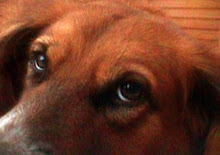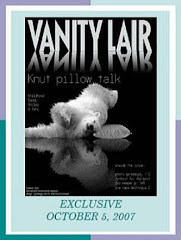
Im Jahr 2008 machte Pinguin Pierre von der California Academy of Sciences in San Francisco von sich reden. Er galt als der wohl weltweit am besten gekleidete Pinguin, nun ja, vermutlich war er wahrscheinlich der weltweit einzig bekleidete Pinguin überhaupt- ausgestattet mit einem Neoprenanzug, nachdem er seine Federn zu verlieren begann.
Im Jahr 2006 zeigten sich kahle Stellen an seinem Schwanz und seinem Kopf. Eine gefährliche Situation, laut Pam Schaller, Biologin an der California Academy of Sciences. Federn halten Pinguine warm und ermöglichen ihnen, sich gegenseitig zu identifizieren.
Mit dem Auftreten der kahle Stellen, wurde Pierre nun auf einmal von den anderen Pinguinen getrietzt und , weil ihm kalt war, ging er immer weniger ins Wasser um zu schwimmen. Pierre bot ein mitleiderregendes Bild.
Medizinische Tests ergaben keine aussagekräftigen Ergebnisse, doch dann hatte Pam Schaller die Idee, Pierre mit einer Neopren-Weste auszustatten, die ihm erlaubten seine Flügel und Flossen zu bewegen. Und, die Idee, einmal ausgeführt, funktionierte. Nicht nur, dass er wieder schwimmen und tauchen konnte und ihn seine Mitpinguingenossen so akzeptierten, nach sechs Wochen in seinen neuen Kleidern, begannen Pierre's Federn wieder zu wachsen.
Pierre ist, was sein Alter angeht, ein Methusalem. In der Wildnis leben Pinguine über 15 Jahre; in Gefangenschaft kommen sie auf etwa 20. Pierre, 1983 im Maryland Zoo geschlüpft, wurde 25 im Februar. Mit seinen neuen Federn und der wiederhergestellten Ordnung verhält er sich wieder ganz als Patriarch der Kolonie.

Here an informative article about Pierre from wikipedia
Pierre, an aged African Penguin (Spheniscus demersus), is the first penguin (and likely the first bird) to have bald spots restored, kept at the California Academy of Sciences in San Francisco.
Pierre hatched at the Maryland Zoo in Maryland in 1983 and was transferred in June to the Steinhart Aquarium facilities at the CAS. In 1997, the then-14-year-old Pierre began coughing periodically, due to an allergic reaction inflaming the upper respiratory tract, treated with one or two daily doses of hydroxyzine, which is an antihistamine. Most penguins only live to 15. However, Pierre showed no other health issues.

In June 2004, Pierre molted what seemed would be his last coat of feathers. Pierre, who is the alpha male in his colony, began to become antisocial, and was shunned by the other penguins. He wouldn't swim much, since the water was too cold and he could develop potentially fatal hypothermia. The bald spots spanned his chest, a patch on his back, and his entire tail and head. Medical tests in 2007 revealed that there was no blood infection, the feather biopsies yielded all normal limits, and the only internal dysfunction seemed to be a low-grade kidney problem.

Senior aquatic biologist Pam Schaller took Pierre under her wing when she saw him shivering. She attempted warming him at first, both with extended time in the "sun pen" and later a heat lamp, and when a hormonal treatment of levothyroxine failed, she thought about how divers dress in cold waters—in wetsuits.
In 2007, Schaller designed a wetsuit with the help of Oceanic Worldwide, a world-renowned wetsuit manufacturer and children's costume seamstress Celeste Argel. The new wetsuit was designed to protect Pierre from the bitter cold that would have otherwise killed him. It was sewn in the shape of a vest, to allow movement when waddling and swimming.
The 3mm-thick neoprene vest was fastened using Velcro. The neoprene material allowed for wet/dry movement and warmth. The colors white, brown, and black were all tested, but each one seemed to draw curiosity from the other penguins. Black was the most discreet option, so that color was chosen for the vest. The vest had holes for Pierre's wings so that he could move them freely. The Velcro fastener ran vertically on the vest, so that if Pierre should gain or lose weight, he would not need a new vest.
After several attempts and close observances, the suit was fitted perfectly for Pierre. NPR's All Things Considered called him "the world's best-dressed penguin". In fact, the other penguins seemed to think the same; they stopped picking on him when he began swimming again with the vest.
Staff noted that Pierre had no problems molting prior to his hydroxyzine treatments. Ever since the treatments had begun, they had removed him from the medication for as long as half a year at a time to verify that the medicine was indeed working. Because the vest was worn during one of these periods when Pierre was not on his treatments, it is unknown whether the hydroxyzine was the actual cause of the molting problem. Another hypothesis was that Pierre was burning extra calories, causing irregularities.
Because the vest was worn during one of these periods when Pierre was not on his treatments, it is unknown whether the hydroxyzine was the actual cause of the molting problem. Another hypothesis was that Pierre was burning extra calories, causing irregularities. Following his recovery in April 2008, staff placed him back on his treatments. Although it was acknowledged that the experiment was not properly conducted, since there were two variables at once, staff agreed that it was for the better, since Pierre was clearly needing warmth.
 Six weeks after his vestment, Pierre showed signs of recovery, and the vest was removed. Pierre regained his respect from the rest of his colony as the leader, overseeing 19 fellow penguins.
Six weeks after his vestment, Pierre showed signs of recovery, and the vest was removed. Pierre regained his respect from the rest of his colony as the leader, overseeing 19 fellow penguins.Their numbers have decreased from 1.2 million birds in 1930 to 120,000 today.
By the way:
Penguin Pierre's story has been published as children's book
and I am pretty sure that it would make a great Xmas surprise for the little one's...
Sources & photos:
- Pierre Sheds Wet Suit for Real Penguin Suit/NPR 26.04.2008
- Designing a penguin wet suit/Science KQEG 01.05.2008
- Pierre the Penguin:Pierre's Wet Suit/ Califnia Academy of Sciences Penguin Blog 11.12.2008
- How Pierre the penguin got back in the swim again/The Independent 26.04.2008
- Pierre the Penguin on wikipedia
- Pierre the Penguin and his Neoprene Suit - Book Review/The Lemonade Stand 26.04.2010
- YouTube videoclip: Pierre and his wet suit




















































2 Kommentare:
Bei Pinguin Pierre muss ich immer an die armen Bären aus dem Leipziger Zoo denken,denen ihr Fell ausgefallen war. Mittlerweile sind sie wohl alle eingeschläfert worden. Dolores hieß eine von ihnen und irgendwo hatte ich mal von ihnen geschrieben.Wie schade,dass es für sie keine so einfache Möglichkeit gegen hat, dass ihr Fell wieder hätte wachsen können...((
Nachdenklich
Birgit
Was es doch alles so gibt.
Ich staune:yes:
Die Bärenburg in Leipzig wird ja nun laut einer Meldung vom 19.12.2011 geschlossen und die Pinguinanlage ebenfalls.
Ja, Brillenbären waren es wohl.Sie waren trotz ihres Fellverlustes so liebenswert.Christina hat auch mehrfach über sie berichtet.
LG Brigitte
Kommentar veröffentlichen